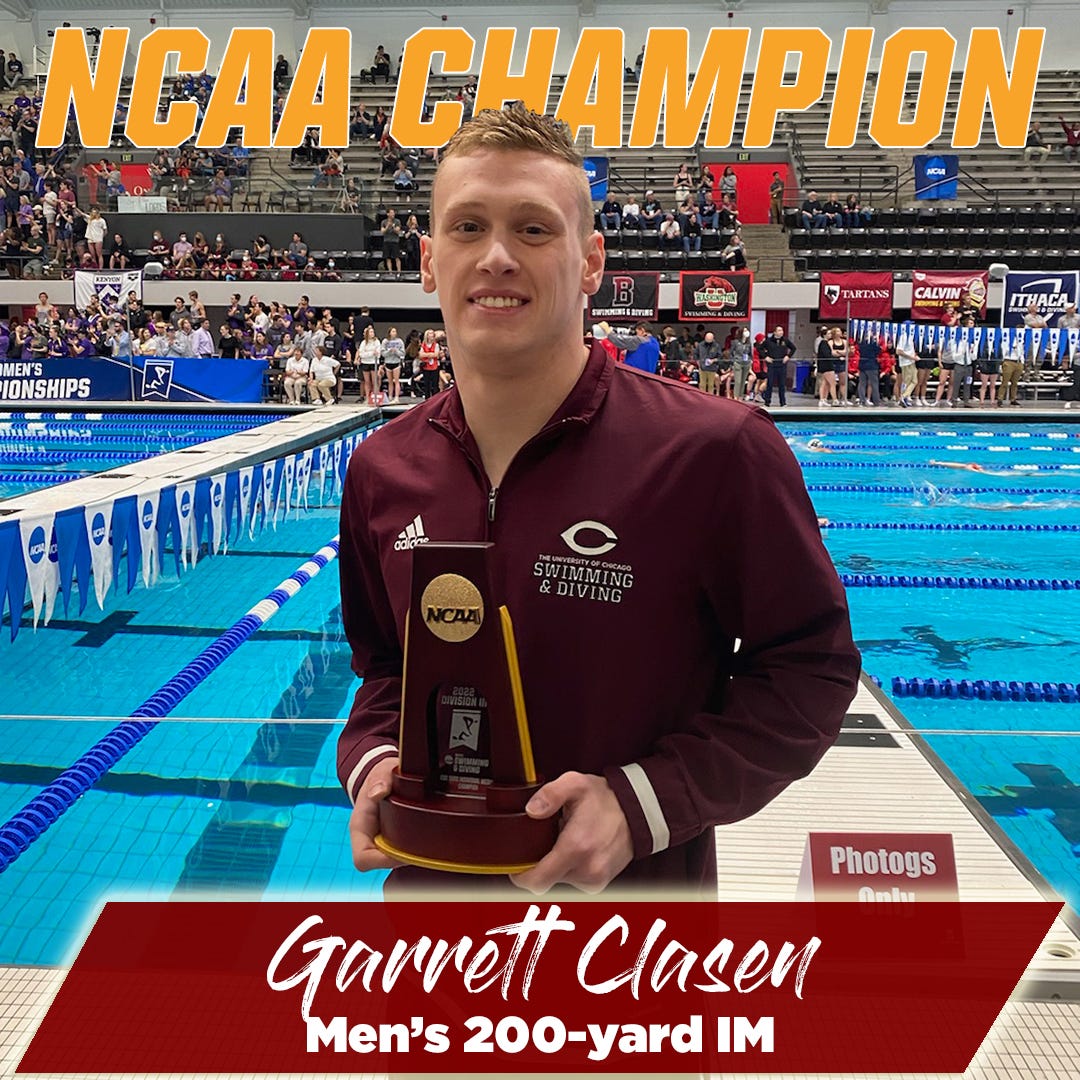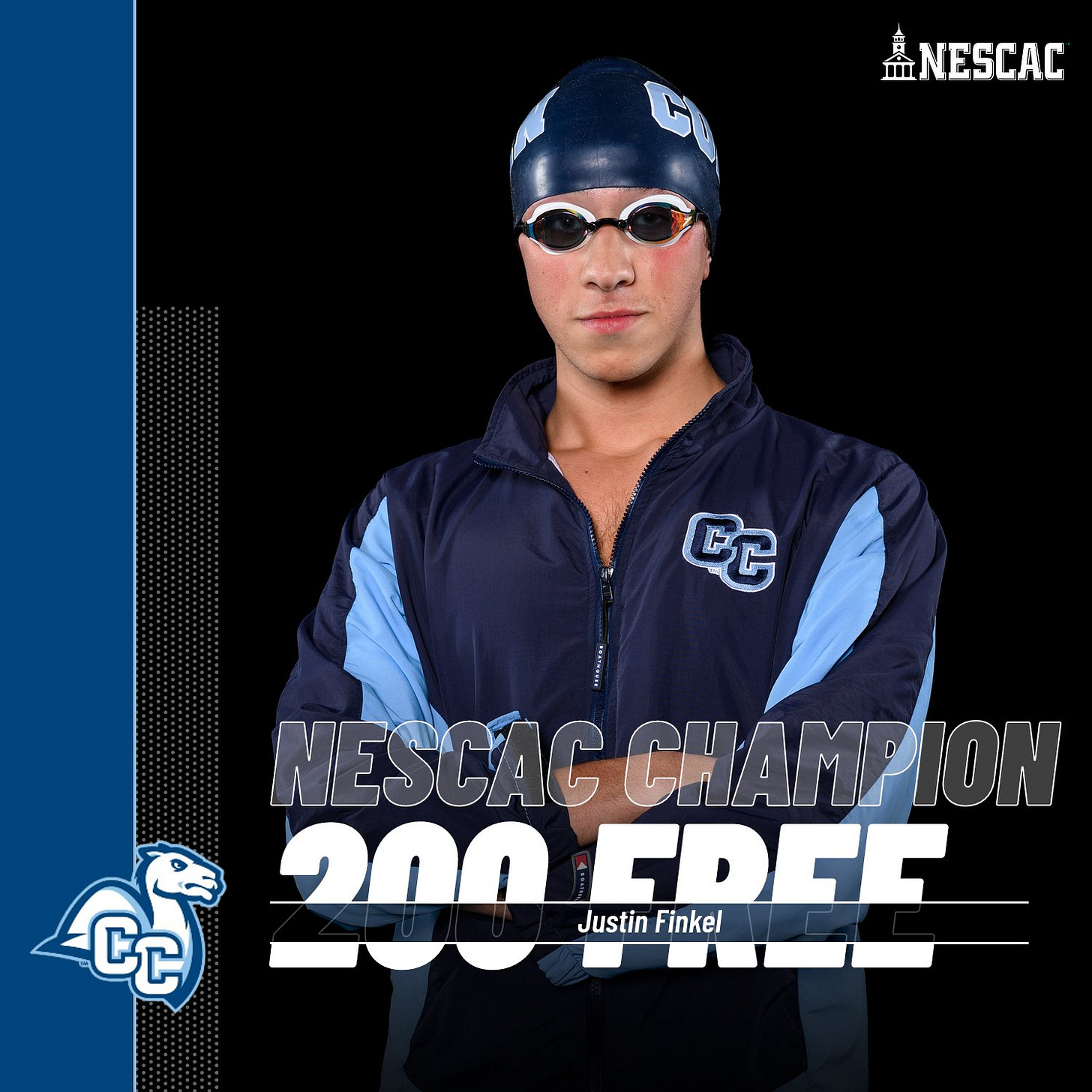D3SO Collaboration with The Anchor Leg Podcast
We're excited to unveil a new collaboration between D3SO and The Anchor Leg Podcast. With current Division III swimmers at the helm, The Anchor Leg Podcast offers an unparalleled insider view, featuring interviews with the top talents in Division III swimming. Don't forget to follow and rate their podcasts on Apple Podcasts, and look for their episodes on D3SO’s dedicated Anchor Leg Podcast page.
On a different track
Previously, we looked at the top active Division III female swimmers who are ranked in the top 10 all-time in one or more women's events. It was a reasonable way to highlight some outstanding current athletes in Division III and demonstrate that the current level of competition is (historically speaking) quite high.
The issue we encounter on the men's side is that the situation is more extreme. Here’s a visual:

The difference in the Top 10 is considerable, with almost 25% more active swimmers in men's event top 10s. Focusing on the top 5s, there are 100% more ranked men. The number of active record holders is usually low, and the two on the Men’s side aren’t that significant, statistically. But, in terms of vibes…the last time there was a Division III Women’s season without a record holder active in division competition was the 2017-18 season.1
The comparisons are tempting, but what do they tell us? That D3 Men’s swimming is improving more rapidly than Women’s swimming? Maybe. If so, is that because Men’s swimming is surging ahead2 of Women’s swimming, or just catching up.3
There’s no right order
Honestly, we are dreading this. There are so many swimmers with a solid claim to be featured here. Apologies in advance to the guys we have written about more frequently or recently - Jake Meyer,4 James McChesney, Kellen Roddy, Avery Clapp, Jesse Ssengonzi, Frank Applebaum - because right now we just don’t have the bandwidth.5
And we are skipping over guys who recently had feature spots, or were more extensively discussed, in our partner podcast - The Anchor Leg. If you want more on Julien Camy, Alex McCormick, even Tobe Obochi, check out the Anchor Leg Podcast.
And we are ignoring everyone from Kenyon. We need to do a whole post on them. Marko Krtinic (reigning 100 Fly champion), Djordje Dragojlovic (reigning 100 Free champion),6 and Aleksa Dobric7 grew up within 50 miles of each other, and 4,951 miles from Gambier, Ohio.8
Garrett Clasen’s baffles us. In 2021-22, he swam 200 IM maybe twice before UAA’s in February, 2022. There he swam lights out and went into Nationals seeded second in the event, which he then won.
In 2022-23, Mr. Clasen was ranked seventh or eighth in 200 IM going into Nationals and won it again.
And that is what makes this year so strange. Mr. Clasen appeared to be going for it from day one. At one point he took the lead in 100 Breast away from Jake Meyer. In early November, Mr. Clasen and Pomona-Pitzer’s Larry Yu battled it out over the 200 IM, though NYU’s Derek Maas - at a different meet - emerged from the weekend with the event lead.
Mr. Clasen has been pedal-down all season, and we have no idea what that means for the remaining few months. Here’s how he ranks all-time.
Derek Maas of NYU ran off with the 200 IM lead in mid-November, and it doesn’t look like he plans to give it back. His closest pursuer is Mr. Clasen and Mr. Maas’ lead is brushing up against 2 seconds.
Mr. Maas’ time in 200 IM is 1:44.23, which is awful close to Andrew Wilson’s Division III record of 1:44.18. Mr. Maas also leads the conference in 100 Back (by a lot).
Justin Finkel of Connecticut College had a pretty good Nationals last season. He laid down all the top ranked times below in one meet.
NESCAC athletes tend to start slow, mostly because they start so late. Of course, that doesn’t seem to hurt them come February and March. Last season, Mr. Finkel didn’t go under 1:50 in 200 Fly until NESCACs. He finished second at Nationals with a 1:44.32. He had a similar pattern with his 200 Free and 500 Free - not doing much until February and then exploding.
All current Top 10 athletes ranked by event:
We will also be circling back to Nick Goudie, Jaden Luo, Jacob Grover, and Lucas Lang in the coming weeks.
Kenyon jedi Crile Hart took the 200 Back record at Nationals in 2018. Ms. Hart swam through the 2021-22 season. At 2022 Nationals, Ms. Hart set another record - 200 IM - and St. Kate’s legend Jordyn Wentzel established a new 200 Breast record. Ms. Wentzel continued to compete through the 2022-23 season.
Side-note: 2018 was a big year for records. Emory’s Fiona Muir set the 50 Free record and Denison’s KT Kustritz set the 100 Breast record. Both records still stand.
In terms of absolute quality.
In terms of relative quality.
This is made all the more complicated by the observation that the upper boundary of Division III swimming is not ‘the physiological limit of human athletic achievement.’ The upper boundary of Division III swimming is Division I swimming. And that boundary is permeable, and it moves.
So, to some extent, the strength of Division III swimming on the Men’s side is a function of things that happen outside of D3 swim programs.
Yes, the attractiveness of Division III programs is a factor, with some D3 facilities, cultures, and opportunities far outstripping anything available in D1. But other stuff matters just as much. Like fluctuations in the stability of many Division I Men’s swim programs. And academic considerations, independent of the swim team. Avery Klapp and Cooper Costello would have made the overwhelming majority of Division I rosters. But they got into Hopkins and Chicago (respectively), so why would they go anywhere else?
Jake Meyer can help us move this along because we write about Jake Meyer all the time. He’s one of the best ever. We aren’t charting his relay splits here but they are historically excellent, like, epic. He’s 3rd all time in 100 Breast and 5th all time in 200 Breast.
‘Weak.’
Some helpful hints. His first name is pronounced ‘Georgie’, though that spelling can also suggest the pronunciation ‘George.’ His last name is pronounced ‘DRA-go-lah-vitch’, stress on the first syllable. When Americans hear native speakers pronounce it, it almost sounds like two syllables, where only the ‘dr’ and ‘vitch’ are clearly audible. For spelling, the key is to remember that the 6th letter in both the first and last name is ‘j’.
Who you might not know, and is not yet on our all-time list, because he’s been injured this whole time but is now healthy and is apparently one of the five best freestyle sprinters in the division.
Yurii Kosian is not part of this group. He’s from the city of Odessa, which is in a different country, a solid 500 miles from the city of Belgrade.












Apology not accepted!